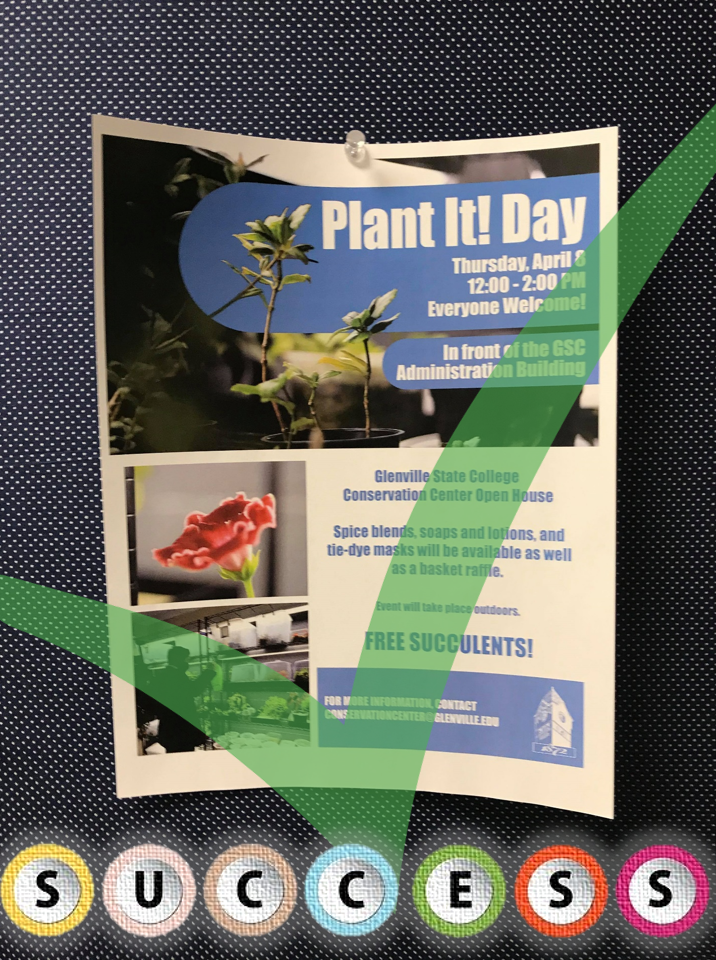
By Sadie Murphy
On April 8, the Glenville State College Conservation Center established a notable standing on campus. Plant-it Day offered community members across Gilmer, including students, staff, faculty, and the general public, with environmentally conscious items that could inexpensively replace widely exploited resources
Some products, such as fragrance sprays, soaps, and face scrubs, contained naturally perfumed concoctions using readily available oils that went through extraction techniques that reduced the number of emissions compared to larger corporations. Dr. Jeremy Keene explained, “Little environmental pressure was used. Leaves were put down into oil and pulled out. While large corporations may be synthesizing these fragrances, the products we used are readily available.”
Hannah Guthrie and Brittney Jenkins gave individuals refreshing and relaxing sprays. These sprays were composed of varying mixtures of witch hazel, water, lavender, citrus, and eucalyptus. The small, gifted vials were a hit among the crowd and the amount prepared in anticipation of the event quickly ran out.
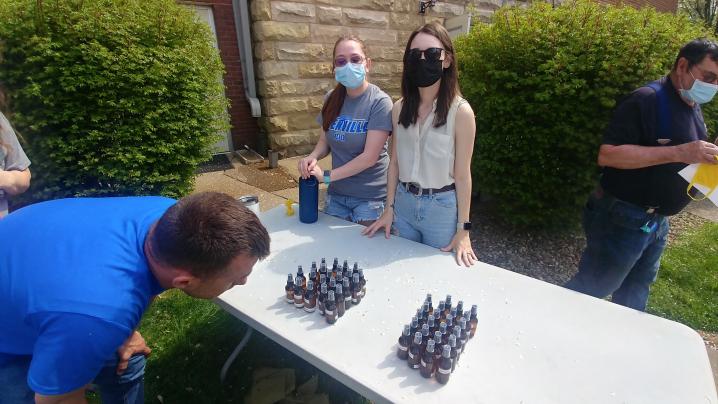
Derek Waugh handed out samples of goat milk soap that contained citrus oils. These were made by Chris Carver by mixing goat milk wax (melted down in a water bath double-boiler) with vitamin E, lavender, citrus. The mixture was poured into molds that were left sit until hardened (approximately 15 minutes). Carver shared, “You can also use dove unscented soap and shave it down and put it in the oven.” He was shocked by the positive results.
Carver also offered “Sakura face scrubs.” These used all-natural cotton cloth. The idea was to use the item with the soaps produced and handed out simultaneously. Keene stated that “everything sourced from other places shipped from FedEx’s zero emission shipping – thanks to carbon offsets.” Karly Allen passed out these samples.
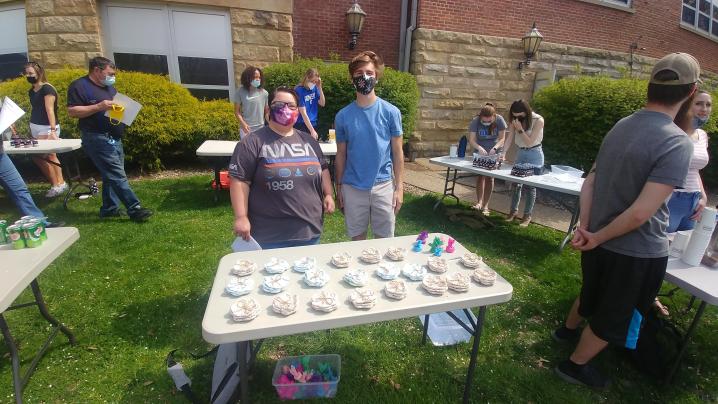
Lucille Westfall and Zaiyah Winfield passed out lotion. These lotions melted at around room temperature and had a variety of ingredients, including beeswax, coconut oil, jojoba oil, vitamin E, and essential oils. A sign at their stations listed possible benefits: preventing acne and wrinkling, minimizing scarring, reliving itching, exfoliating skin, and preventing skin cancer. Essential oils have been shown to improve symptoms of anxiety. By holding the lotion in your hand, it would begin to melt and provide the perfect source of moisture for rough, cracked hands. Carver shared that these product were actually made by mistake. Westfall was initially responsible for creating the aforementioned soaps but after a recipe email mix-up, she ended up creating these notably, deliciously fragrant creams that were wrapped in tissue paper of a variety of colors: baby blue, pistachio green, sage green, taffy pink, fuscia, and scarlet red.
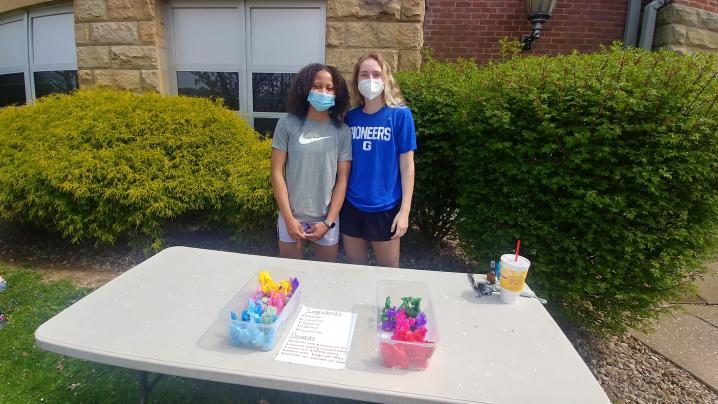
Hannah Clarkson and Tiffany Curtis handed out face scrubs that were made using ingredients, such as, rose petals, almond oil, sugar, and lavender oil. These samples were packed in neatly labeled, minimalistic yet generously proportioned containers and the concoction was a beautiful purple tint.
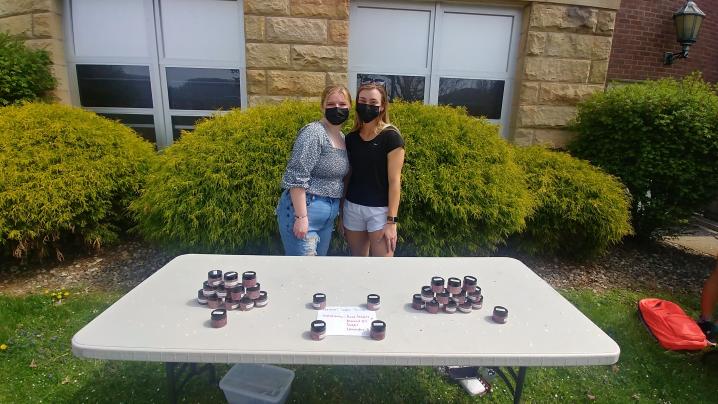
There were multiple natural teas available during the event: chicory, hibiscus, pine needle, and mint. [m2] Hibiscus tea may help promote weight loss. In a study by PubMed Central, obese mice given hibiscus extract for 60 days showed an overall reduction in body weight. [m3] Pine needle tea improves hair and skin regeneration and improves red blood cell production. This is believed to be caused by Vitamin A and Vitamin C. [m4] Mint tea has shown to improve indigestion and soothe symptoms of Irritable Bowel Syndrome (IBS). Doctors have prescribed peppermint oil to patients suffering from symptoms of this condition: cramping, abdominal pain, bloating, gas, diarrhea, and/or constipation. Researchers also believe that mint tea may also help relieve allergies due to a compound called Rosmarinic Acid found in peppermint. [m5]
Macy Rush was responsible for informing and directing community members in choosing from the hibiscus tea, mint tea, and water.
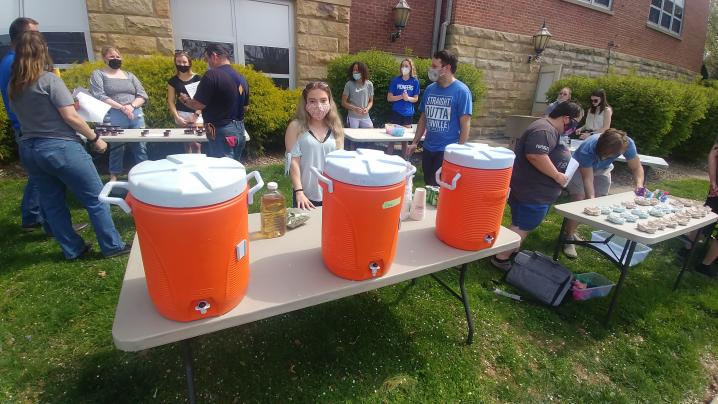
It was evident that Tyler Moore and Preston Allison spent a lot of time setting the mood for their products. They created a chicory tea that was made to serve cold or hot. The tags from these bags can be removed and planted. After a few weeks, you will begin to notice that this innovative paper slips will have wildflowers sprouting. They also created lemon shortbread. A list of the ingredients was framed and easily displayed for participants. Their table, depicted below, featured a chicory plant and framed images of the mature flower and roots. Allison shared that his "favorite part was educating all the visitors about the benefits of chicory tea and showing them how common of a plant it is in WV. It grows in places we visit or see often." He described an interaction with a polish student who told Allison "it reminded her of home and childhood." He shared that "chicory was popularized in Poland."*
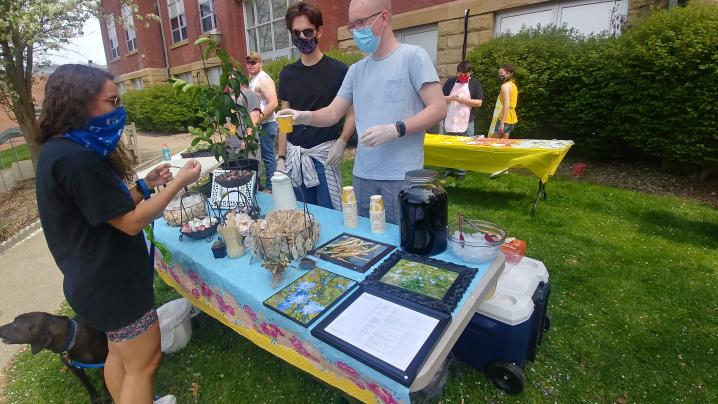
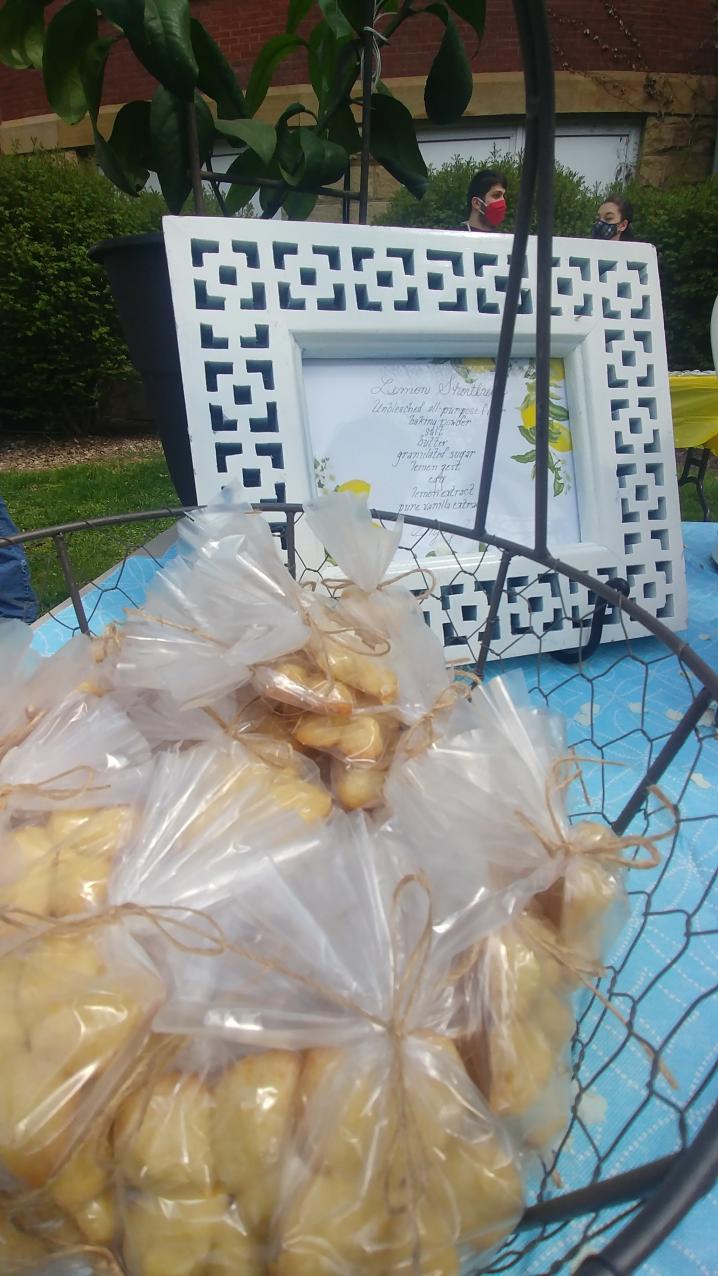
The pine needle tea was handed out by Tessa Jordan and Kurt Bokesch, who described the process of making it as rather simple. The only ingredients needed were water and pine needles.
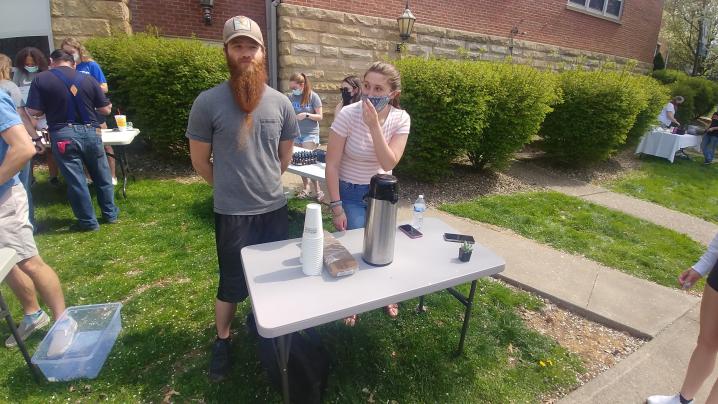
Dr. Sara Sawyer, Professor of Biology, slaved over the small outdoor stove cooking wheat pancakes for participants. Those who took her up on the challenge of trying this unusual food were offered fruit and maple syrup to supplement the already delicious flavor.
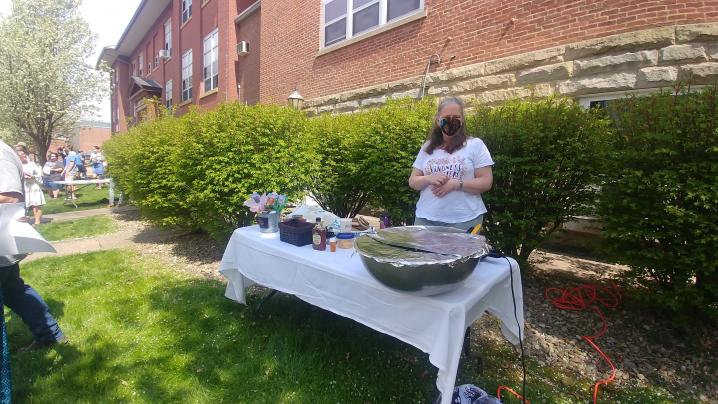
As a student in Dr. Keene’s Conservation class, I lent a hand to contributors. One particular contributor, Sterling Gandee, was creating natural bird feeders using pinecones, peanut butter, and bird seed. A simple creation that can be made cheaply at home, pine cones are smeared in peanut butter and then rolled in bird seed. It was an unusual experience, being covered in peanut butter up to my wrists, but a huge hit with dogs who accompanied their owners to the Plant-It Day festivities.
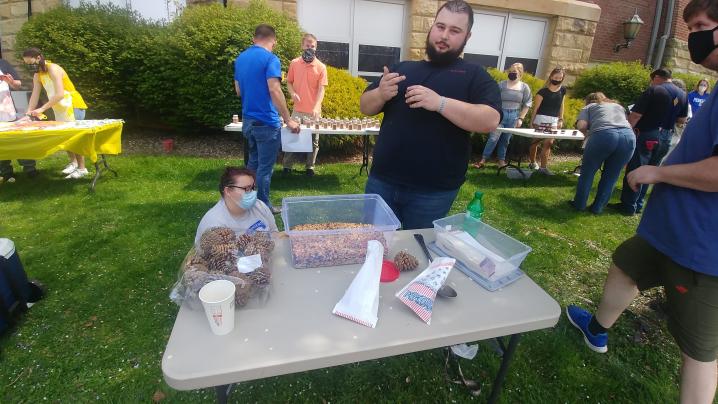
Logan Hays and Jenna Sprouse took a very different approach to their contribution. Given the growing importance of face masks during the COVID Pandemic, these students used three simple and all-natural ingredients (Tumeric, Indigo, and Madderroot) to create organically dyed face coverings. These will help participants protect against the spread of COVID, reduce the number of emissions created by using synthetic dyes, and look snazzy doing it.

Small succulents and magnets, created by Professor of English, Marjorie Stewart, were also given out for a small $5 dollar donation.
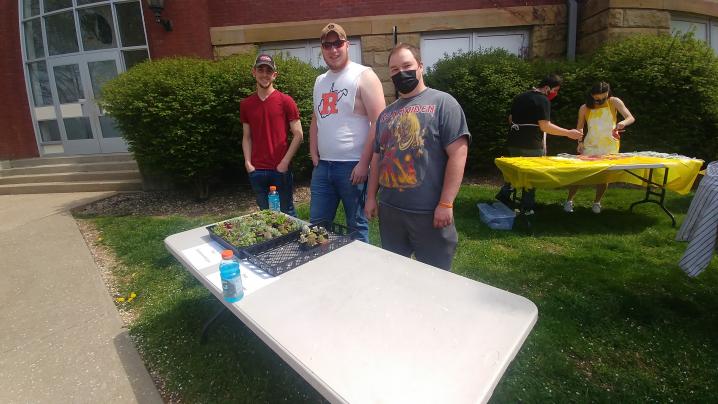
Plant-It Day would not have been such a huge success without contributions from Dr. Jeremy Keene, Chris Carver, Dr. Sara Sawyer, Dr. Marjorie Stewart and active contributors from Dr. Keene’s Botany and Conservation classes.
The Phoenix is grateful for the photos contributed by Luke Turner.
[m5]9 Benefits of Drinking Mint Tea – Dragonfly Tea
* The Phoenix originally reported that Moore and Allison created Cherry Tea. This was incorrect and has been fixed.
Share article on:

